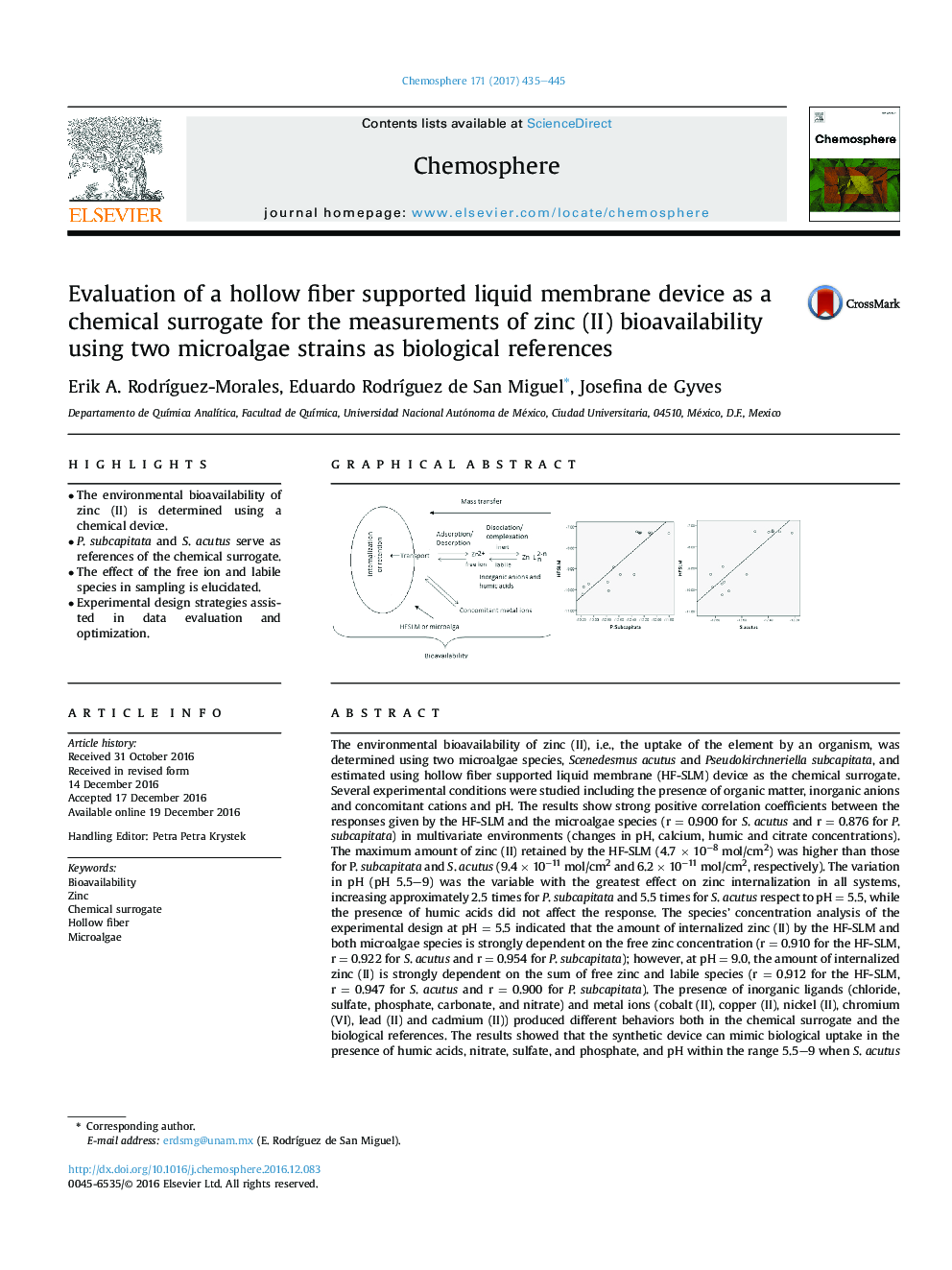| کد مقاله | کد نشریه | سال انتشار | مقاله انگلیسی | نسخه تمام متن |
|---|---|---|---|---|
| 5746340 | 1618800 | 2017 | 11 صفحه PDF | دانلود رایگان |

- The environmental bioavailability of zinc (II) is determined using a chemical device.
- P. subcapitata and S. acutus serve as references of the chemical surrogate.
- The effect of the free ion and labile species in sampling is elucidated.
- Experimental design strategies assisted in data evaluation and optimization.
The environmental bioavailability of zinc (II), i.e., the uptake of the element by an organism, was determined using two microalgae species, Scenedesmus acutus and Pseudokirchneriella subcapitata, and estimated using hollow fiber supported liquid membrane (HF-SLM) device as the chemical surrogate. Several experimental conditions were studied including the presence of organic matter, inorganic anions and concomitant cations and pH. The results show strong positive correlation coefficients between the responses given by the HF-SLM and the microalgae species (r = 0.900 for S. acutus and r = 0.876 for P. subcapitata) in multivariate environments (changes in pH, calcium, humic and citrate concentrations). The maximum amount of zinc (II) retained by the HF-SLM (4.7 Ã 10â8 mol/cm2) was higher than those for P. subcapitata and S. acutus (9.4 Ã 10â11 mol/cm2 and 6.2 Ã 10â11 mol/cm2, respectively). The variation in pH (pH 5.5-9) was the variable with the greatest effect on zinc internalization in all systems, increasing approximately 2.5 times for P. subcapitata and 5.5 times for S. acutus respect to pH = 5.5, while the presence of humic acids did not affect the response. The species' concentration analysis of the experimental design at pH = 5.5 indicated that the amount of internalized zinc (II) by the HF-SLM and both microalgae species is strongly dependent on the free zinc concentration (r = 0.910 for the HF-SLM, r = 0.922 for S. acutus and r = 0.954 for P. subcapitata); however, at pH = 9.0, the amount of internalized zinc (II) is strongly dependent on the sum of free zinc and labile species (r = 0.912 for the HF-SLM, r = 0.947 for S. acutus and r = 0.900 for P. subcapitata). The presence of inorganic ligands (chloride, sulfate, phosphate, carbonate, and nitrate) and metal ions (cobalt (II), copper (II), nickel (II), chromium (VI), lead (II) and cadmium (II)) produced different behaviors both in the chemical surrogate and the biological references. The results showed that the synthetic device can mimic biological uptake in the presence of humic acids, nitrate, sulfate, and phosphate, and pH within the range 5.5-9 when S. acutus was used as the biological reference, considering the simultaneous contribution of the Zn2+ and ZnOH+ labile species depending on the chemical composition of the medium.
132
Journal: Chemosphere - Volume 171, March 2017, Pages 435-445